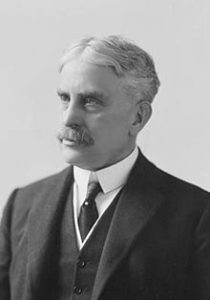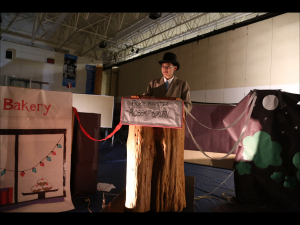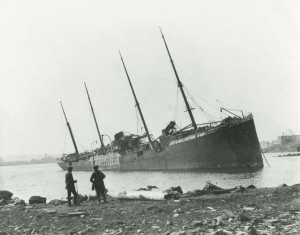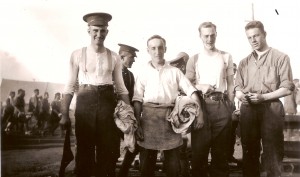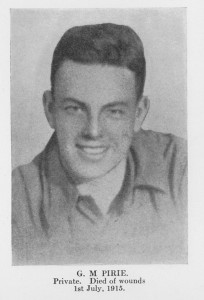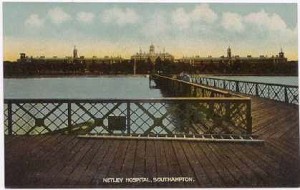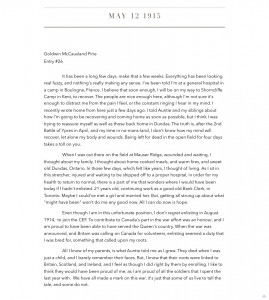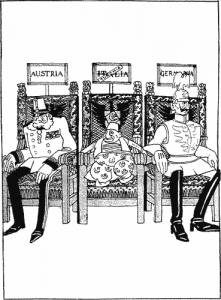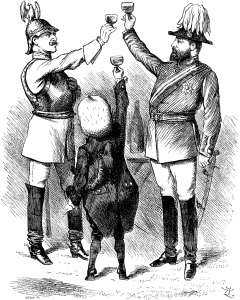Before the highly anticipated two week Winter Break at the end of December, us PLP students morphed all of our learning of WWI into a final project at the annual PLP Exhibition. Us Grade 11’s focussed on how Canada’s identity emerged and grew before, throughout, and after World War One. We were split off into groups of 5 and were each assigned a specific time period of Canada’s history. Our task was to create an immersive and exciting walk-through exhibit, with each time period leading to the next, all the while clearly showing how each era affected the identity of Canadians. The topics were as follows; Pre-War Canada, 1916 Trenches, Conscription Crisis, Post-War Canada, and the Great Depression. I was part of the Pre-War group, along with Jackson, Stanfield, Tom, and Brianna, and we all worked well together, just not always working hard. Anyways, to give you a glimpse into what our group had to work with, here’s a little background on the time period.
Before WWI, Canada was a young and newly announced country, and a part of the powerful British Empire. When the war was announced, we were pretty much obligated to help our mother country, and when Britain was calling for the support of the commonwealth countries, we were there in a flash. At that time, we were being lead by Prime Minister Robert Borden, who urged Canadians to answer the call and join in on the fight. Before him was Prime Minister Wilfred Laurier, who was the “king of compromises” (I just made this title up, not sure if anyone referred to him as this!). To represent French Canadians in the Laurier era was Henri Bourassa, who claimed that Laurier’s compromises between the French and the English in the country just weren’t working out for anyone, and that no one was fully satisfied with his actions. And pretty much at the same time, Canada had introduced an Immigration policy, given the name “Open Door Policy”, spearheaded by the Minister of the Interior, Clifford Sifton. The immigration boom that lead all the way up to 1914 was one of the most important periods of Canadian population growth.
So that was a bit scattered, sorry I was going backwards from most recent to least. Anyways, the people and things that I just mentioned were what my group thought were the main puzzle pieces that made up Canada’s Pre-War history, and we began thinking of ways we could transform these pieces into an immersive experience. We actually got started on our ideas fairly quickly and came up with a solid plan, but unfortunately decided to leave our making until the very last moment…but I’ll get onto that in a second. I think our part of the exhibit was actually well put together, and it incorporated the important events in history that gave the audience an awareness of how Canadian Identity evolved throughout the time of war.
At the beginning of our walk-through, we had Tom and Brianna welcoming the new “immigrants” (the general public) into “Canada”. We used a large open room for this first part of our area, and decorated it with bits-and-bobs from the era, giving it the late 1800’s vibe. This was our Immigration office, and we had the hopeful immigrants signing papers while hearing a speech about how they were going to be accepted into Canada.
From there, our new immigrants were lead into the front of the gym, which was transformed into an early 1900’s street corner, and shoved into a crowd waiting for Prime Minister Borden to begin his public announcement. This was actually Stanfield up on the podium, but before he began, Jackson and I charged onto the scene as Laurier and Bourassa, engaged in an arguement as to why Laurier was no good for Canada. This part of our act was probably my favourite, because we were able to fit so many pieces of history into one set and our end result was terrific. We created elaborate backdrops for our set to give the audience the ultimate experience of being there, and we also coped well with the fact that the gym lights had to be turned off, and were able to successfully make it look like nighttime by strategically using any artificial lighting that we had handy.
After being briefed on how Canada was needed overseas in the war by Stanfield, the public were herded to another bit of our set, a less elaborate War Registration Office where Brianna awaited again for them to sign another set of papers. I actually enjoyed this aspect of our exhibition, I think it made the whole experience more authentic and believable. After they signed in to join the Canadian Expeditionary Forces, they were marched over to the trenches.
And that is where our experience ended, it doesn’t sound like much in writing, but it all required an insane amount of work and time! But in the end, I was extremely happy to have produced a really awesome immersive experience to add to the PLP Exhibition (not to mention Ms Willemse and Mr Hughes said we would all receive 100% in class because it was all so good!).
